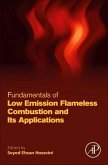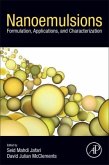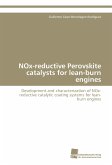NOx Emission Control Technologies in Stationary and Automotive Internal Combustion Engines: Approaches Toward NOx Free Automobiles presents the fundamental theory of emission formation, particularly the oxides of nitrogen (NOx) and its chemical reactions and control techniques. The book provides a simplified framework for technical literature on NOx reduction strategies in IC engines, highlighting thermodynamics, combustion science, automotive emissions and environmental pollution control. Sections cover the toxicity and roots of emissions for both SI and CI engines and the formation of various emissions such as CO, SO2, HC, NOx, soot, and PM from internal combustion engines, along with various methods of NOx formation.
Topics cover the combustion process, engine design parameters, and the application of exhaust gas recirculation for NOx reduction, making this book ideal for researchers and students in automotive, mechanical, mechatronics and chemical engineering students working in the field of emission control techniques.
Topics cover the combustion process, engine design parameters, and the application of exhaust gas recirculation for NOx reduction, making this book ideal for researchers and students in automotive, mechanical, mechatronics and chemical engineering students working in the field of emission control techniques.








